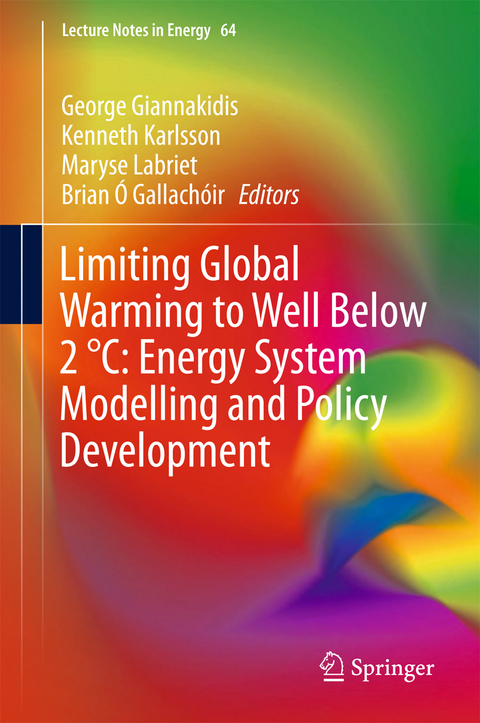
Limiting Global Warming to Well Below 2 °C: Energy System Modelling and Policy Development
Springer International Publishing (Verlag)
978-3-319-74423-0 (ISBN)
This book presents the energy system roadmaps necessary to limit global temperature increase to below 2°C, in order to avoid the catastrophic impacts of climate change. It provides a unique perspective on and critical understanding of the feasibility of a well-below-2°C world by exploring energy system pathways, technology innovations, behaviour change and the macro-economic impacts of achieving carbon neutrality by mid-century. The transformative changes in the energy transition are explored using energy systems models and scenario analyses that are applied to various cities, countries and at a global scale to offer scientific evidence to underpin complex policy decisions relating to climate change mitigation and interrelated issues like energy security and the energy-water nexus. It includes several chapters directly related to the Nationally Determined Contributions proposed in the context of the recent Paris Agreement on Climate Change.
In summary, the book collates a range of concrete analyses at different scales from around the globe, revisiting the roles of countries, cities and local communities in pathways to significantly reduce greenhouse gas emissions and make a well-below-2°C world a reality.
A valuable source of information for energy modellers in both the industry and public sectors, it provides a critical understanding of both the feasibility of roadmaps to achieve a well-below-2°C world, and the diversity and wide applications of energy systems models. Encompassing behaviour changes; technology innovations; macro-economic impacts; and other environmental challenges, such as water, it is also of interest to energy economists and engineers, as well as economic modellers working in the field of climate change mitigation.
The authors are part of the Energy Technology Systems Analysis Program (ETSAP), one of the IEA Technology Collaboration Programmes (TCPs) that underpin the efforts of the International Energy Agency (IEA) to support innovation for energy security, economic growth and environmental protection. The IEA-ETSAP-TCP is a unique network of energy modelling teams from approx. 70 countries that has operated for over 40 years. The network members cooperates to establish, maintain, develop and expand a consistent multi-country energy / economy / environment / engineering (4E) analytical capability, mainly based on the MARKAL/TIMES family of models. These bottom-up techno-economic models have been used to build and compare long term energy pathways and to provide in-depth national, multi-country, and global energy and environmental analyses.
Introduction.- Part I: What to Learn from Global Perspectives?.- Part II: What Leadership for European Countries?.- Part III: Are Non-European Countries Well Committed?.- Part IV: What Roles for Cities and Local Communities?
| Erscheinungsdatum | 21.04.2018 |
|---|---|
| Reihe/Serie | Lecture Notes in Energy |
| Zusatzinfo | XI, 423 p. |
| Verlagsort | Cham |
| Sprache | englisch |
| Maße | 155 x 235 mm |
| Gewicht | 812 g |
| Themenwelt | Naturwissenschaften ► Biologie ► Ökologie / Naturschutz |
| Technik ► Elektrotechnik / Energietechnik | |
| Schlagworte | below 2 degree climate roadmap • climate change • Climate Change Management • Energy Security • Energy Systems Model • Global temperature increase • Greenhouse Gas Emissions • Innovation • limiting warming to below 2 degrees • prevent 2 degrees of global warming • Renewable energy technology • roadmap to climate change mitigation • temperature rise below 2 degrees • well below 2 degree world |
| ISBN-10 | 3-319-74423-2 / 3319744232 |
| ISBN-13 | 978-3-319-74423-0 / 9783319744230 |
| Zustand | Neuware |
| Haben Sie eine Frage zum Produkt? |
aus dem Bereich


